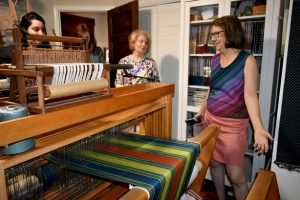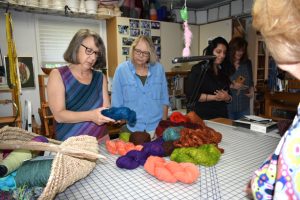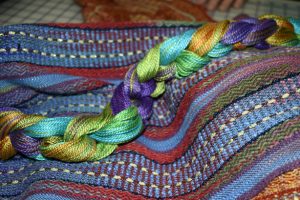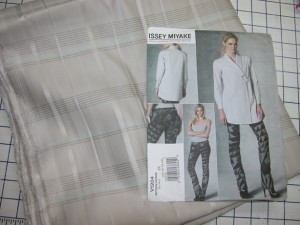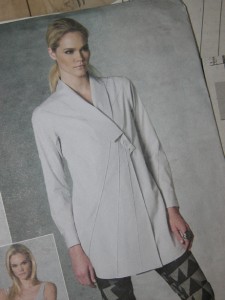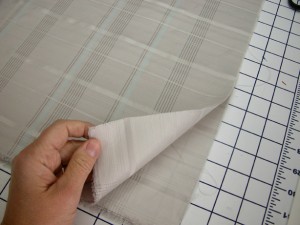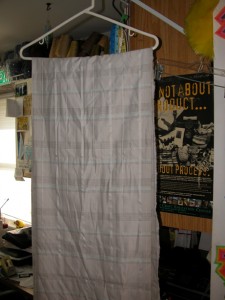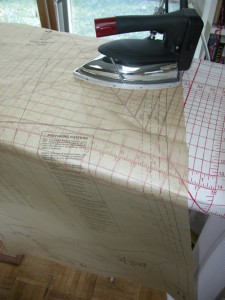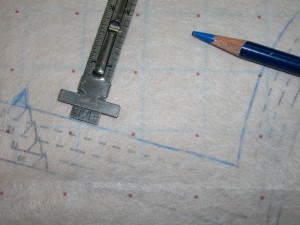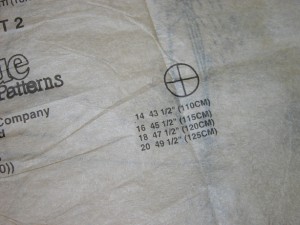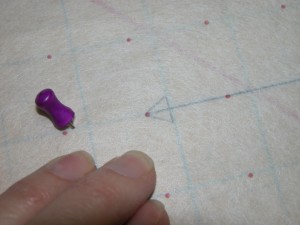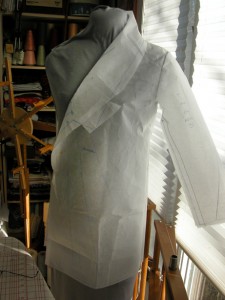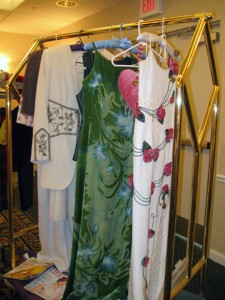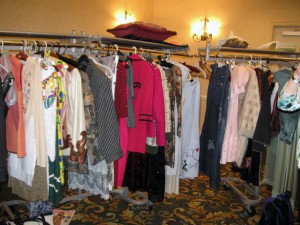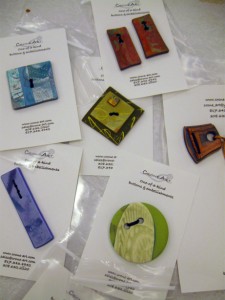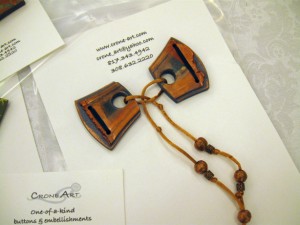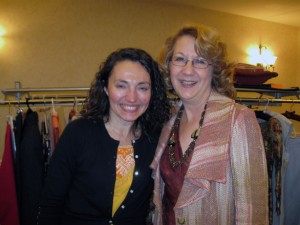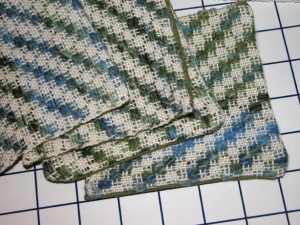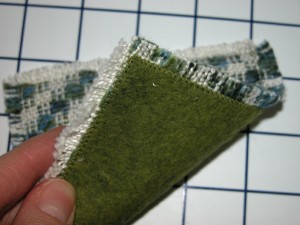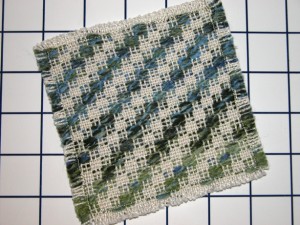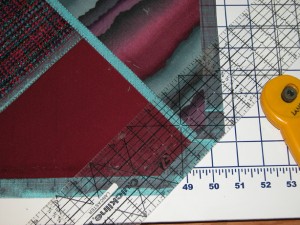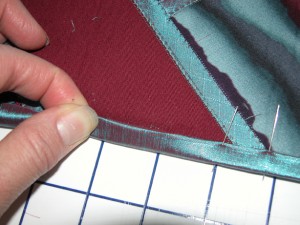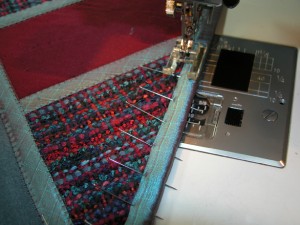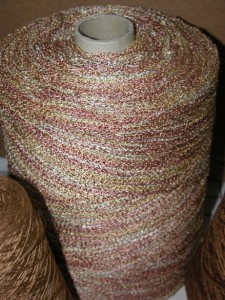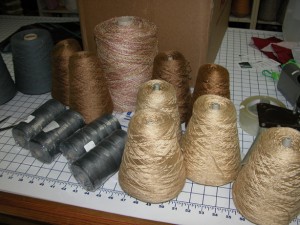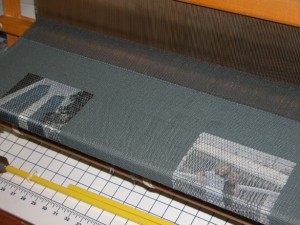It is no surprise that weavers have incredible patience, we by nature have to be the kind of person to whom process, no matter how slow, is the whole point. I will sit patiently threading 1000 ends, or painstakingly plod along following a complex treadling sequence, or methodically develop a new weaving draft. In garment making I relish the joy of a series of perfect bound buttonholes, a seam well sewn, a zipper perfectly installed. I’m not a stranger to ripping out, unweaving, or starting over.
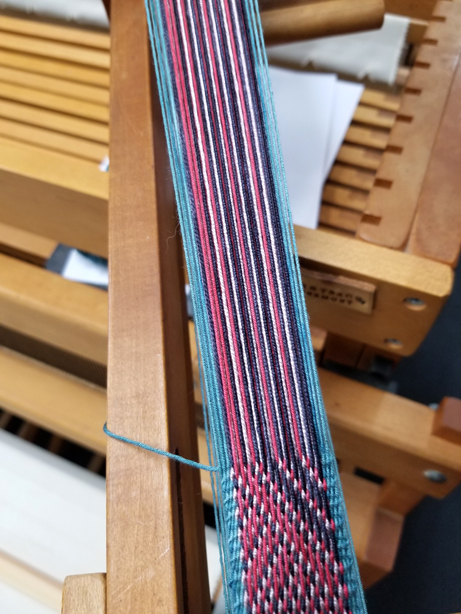
I started this 3 color Baltic Pick up based on a new book I got from Annie MacHale. It is soooo slow. But with patience, I’ll get faster and really be able to follow the pick up sequence. I might edit the graph to be more in the way I like to follow pick up. Another few hours of work. No problem.
I just finished the third virtual conference in a month. I taught at the first one, the MAFA conference, but also took some classes, and I attended the second and third, the ASG conference with the American Sewing Guild, and yesterday and today, NEWS, that’s the New England Weavers Seminar. The second two were a series of lectures open to all those who signed up. I’m pretty cross eyed from all the Zoom meetings but the wealth of information and inspiration I’ve immersed myself in this past month has felt like I earned a 2 year college degree. So many techniques to explore and think about and appreciate.
When I come across something that makes my heart sing that took no effort at all, I almost feel like I’m cheating. It can’t be that easy…
I’d listened to ice dyeing programs and lectures before and was really curious about the spontaneity. There is nothing spontaneous about anything I do in the studio. Can you achieve anything decent from just tossing cellulosic fibers into a basin, tossing on ice and then some fiber reactive dye and get something that doesn’t look like you did the craft project du jour?
I listened to Jessica Kaufman in a two hour class I signed up for at the MAFA conference. This past week was the first chance I’d had to actually try this. I thought you needed a lot more equipment, set up, whatever. I thought as everything in fiber turns out to be, it would be way more complicated. Jessica is with Waxon studio, and she is obviously a pro at this technique and teaching it, and teaching it online.
I watched the replay mid week before the replays expired, and decided to gather up some yarn, fabric, scarves and an old vintage cotton napkin that I can’t imagine why was in my stash. The yarns were probably cotton, the scarves rayon, and the fabric a couple yards of rayon challis.
All I needed was some buckets, and some ice. Yes, I presoaked overnight, all the fibers in Soda Ash. I keep that in the studio because I regularly dye yarn with Fiber Reactive Dyes. Then I just scrunched stuff up, secured with rubber bands, and laid gently in hospital tubs. I acquired a huge amount of them during my husband’s long illness. The only thing positive about an extended hospital stay is the great tubs they give you.
I picked up a bag of ice at the grocery store, sprinkled some on, and then sprinkled on some fiber reactive dyes from Dharma Trading. And I let everything sit for 24 hours, as Jessica warned, 24 hours after the ice melts. Jessica also said to Trust the Muck. Meaning it is OK if the ice melts and all the dye pools around the cloth. Trust the Muck.
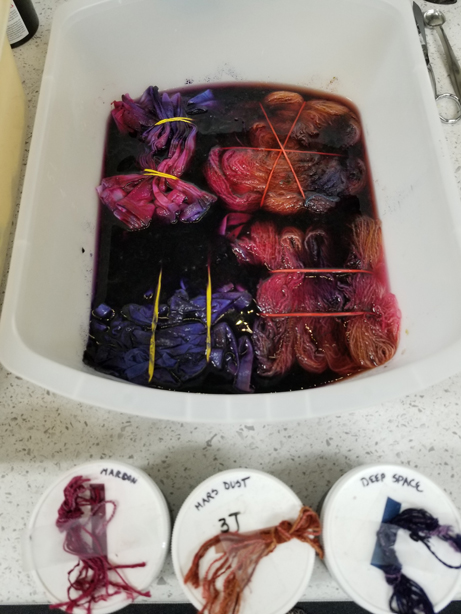
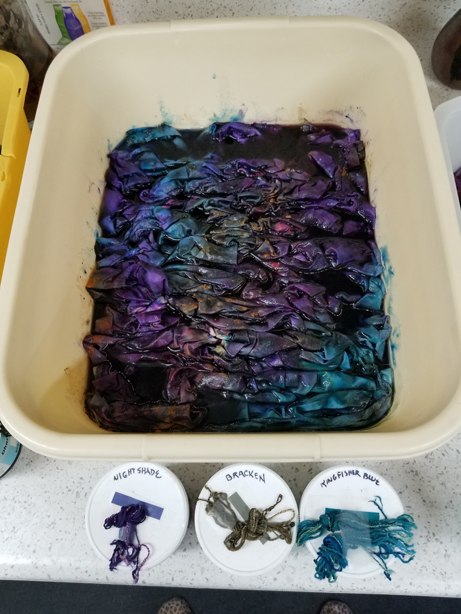
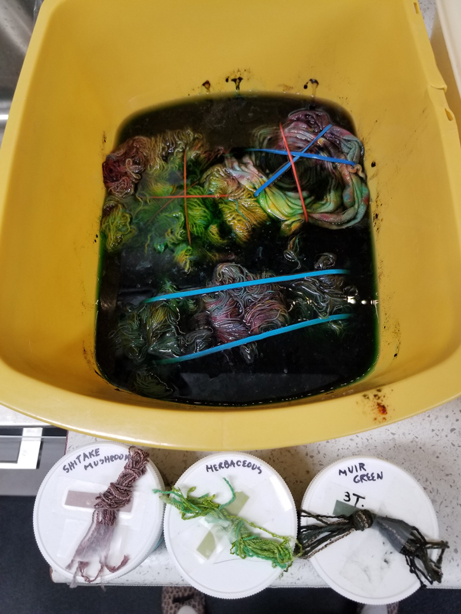
Well, everything was ready to rinse about 1am going into Friday morning. And yes, I couldn’t wait, so I stayed up and rinsed and rinsed and rinsed and then couldn’t sleep all night because I was so freaking excited by what came out.
Here are a few skeins of yarn…
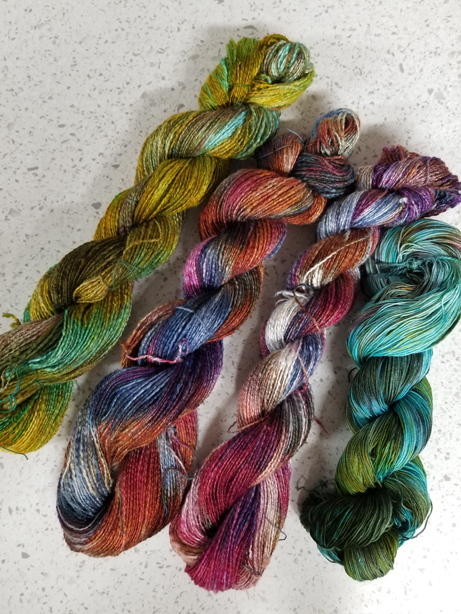
Here are a couple rayon challis scarves…
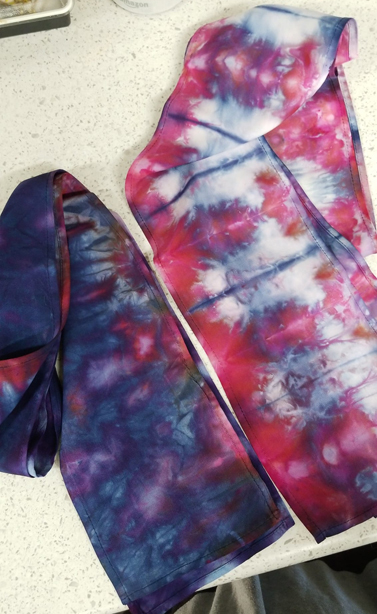
Here is my new favorite thing in the whole world, my vintage table napkin that I now use with every meal.
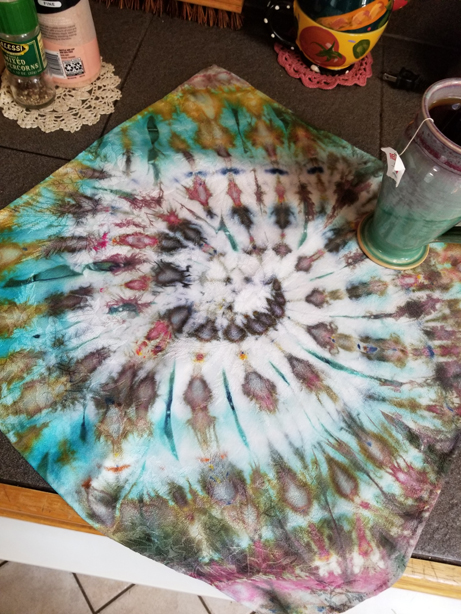
And here is the most gorgeous rayon challis fabric, I’m just gobsmacked looking at this across my cutting table, I can’t wait to figure out how to use this, almost too gorgeous to hide inside a garment as a lining, (which was the whole point in trying this technique, ways to get interesting linings…)
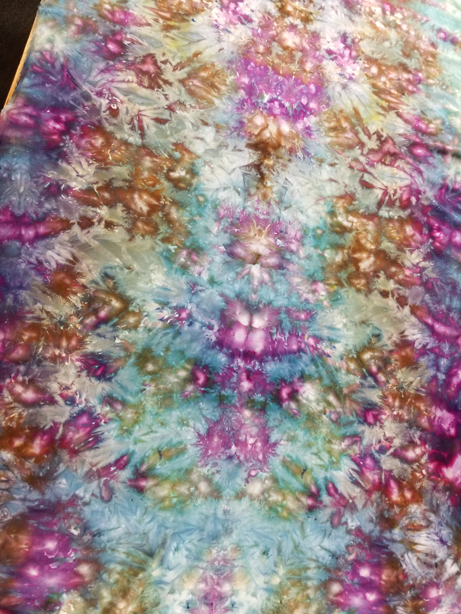
And while I listened to lecture after lecture over the last couple weeks, I came across this drop spindle I had tucked in a bag, with an alpaca silk blend fiber that I had started to spin eons ago. The fiber was from Gale Evans at www.galesart.com and I was sad to read that Gale closed the shop in May of this year, to move on to another medium, giving up fibers and dyeing all together. I know how Gale feels…
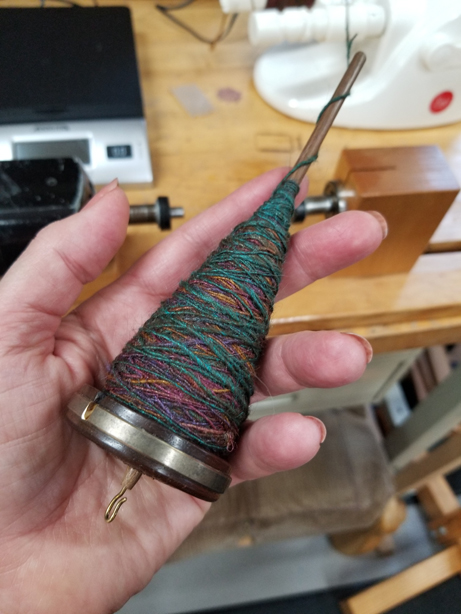
And I actually finished a garment in the studio. I’ve been slowly working on handwoven garments, bits at a time while I write script and demo the techniques for my YouTube videos. We just finished shooting the last techniques for this dress, installing an invisible zipper which just dropped Friday, and one for next week on installing a neck/armhole facing. So the dress, which is made from the handwoven Antique Jewels Fabric I wove last year, the draft is a free download available here, is finished and I can’t wait to wear this. The fabric was perfect, it held its shape and was a joy to sew. The pattern is my 1000 swing dress. That’s available as a download (not free) here. It has pockets!
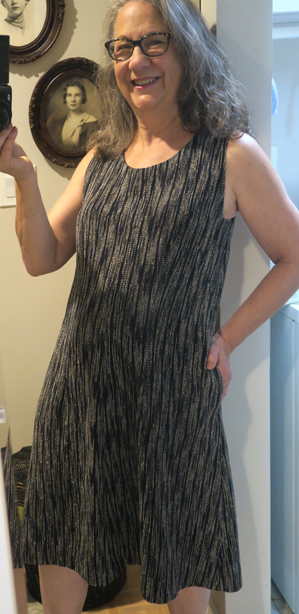
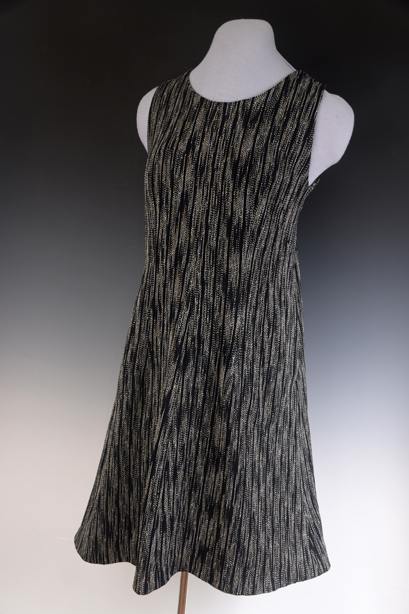
And so dear readers, my life is starting to fill up again, and I’m not sure how I feel about that, but the opportunities are just too much fun, and there are too many fun things to do out there. I managed to get into NYC for the day last week, to the MET, and the Jewish Museum, and to meet up with a dear friend and have sushi down near 28th street. Except for when I was actively eating I wore a mask the entire day, and had no problem doing so, even though I’ve been vaccinated for months. Scary times, covid cases are on the rise, and I’ll continue to wear a mask wherever I go.
Stay safe out there, and learn all the things!

